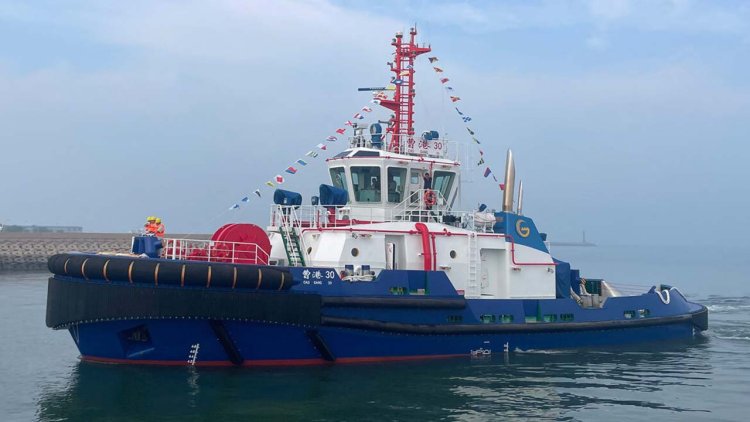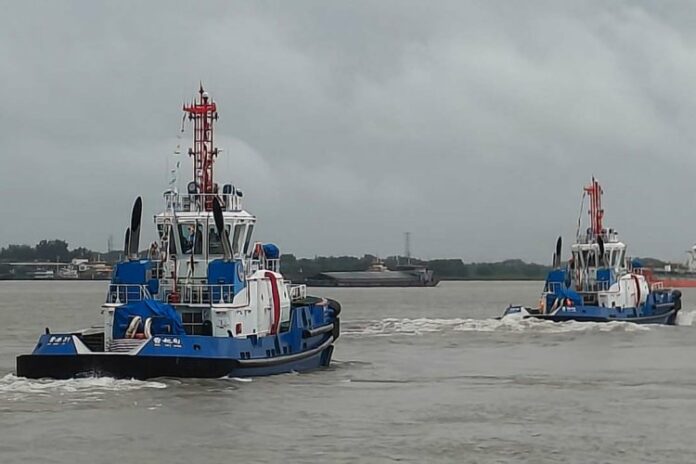With the required 34.8 metre vessel length, bollard pull of 80 tonnes, and a gross tonnage not greater than 500, which was up to the limit, the design was quite challenging.
Substantial but well-worthwhile efforts were spent in the development of hull form and arrangement to provide sufficient displacement; single cabins for 10 crew members as per Chinese Statutory requirement; machinery arrangement for the large equipment of the propulsion system, as well as a fire-fighting system of Fi-Fi 1 Class notation.
Key particulars of the Cao Gang 30 and Cao Gang 31 are:
- Length, overall (excluding fenders): 34.7 m
- Beam, moulded: 11.1 m
- Depth, least moulded: 5.19 m
- Maximum draft (navigational): 4.94 m
- Gross Tonnage: < 500
Main tank capacities are:
- Fuel oil: 85 m3
- Potable water: 30 m3
- Ballast: 110 m3
- Fire-fighting foam: 10 m3

The tugs were designed and constructed to the following CCS Class Notation:
★ CSA, TUG, R1, FIRE FIGHTING SHIP 1, WATER SPRAYING
★ CSM, AUT-0
Propulsion machinery consists of two Yanmar main engines of 8EY26W 2390 kW at 750 rpm and a pair of Schottel Z-drive SRP 460FP, Ø2700, FP.
Each of the multi-purpose tugs is equipped with deck machinery, including a hawser winch two individual windlasses at the bow; a towing winch on the aft deck. Deck machinery equipment is provided by Karmøy Winch AS, Norway.
Fenders for ship-handling at the bow consist of an upper row of cylindrical fenders and a lower course of W-fender. Sheer line fendering consists of “D” rubbers and a W-fendering at the stern.
The accommodations have been outfitted for a crew of ten including two cabins with a living room for the master and chief engineer, mess, and a galley arranged in the deckhouse, eight other crew cabins located on the lower accommodation deck. The wheelhouse is designed with a split-type control station which provides maximum all-round visibility with exceptional visibility to the bow and side fendering, as well as operation on the aft deck.



